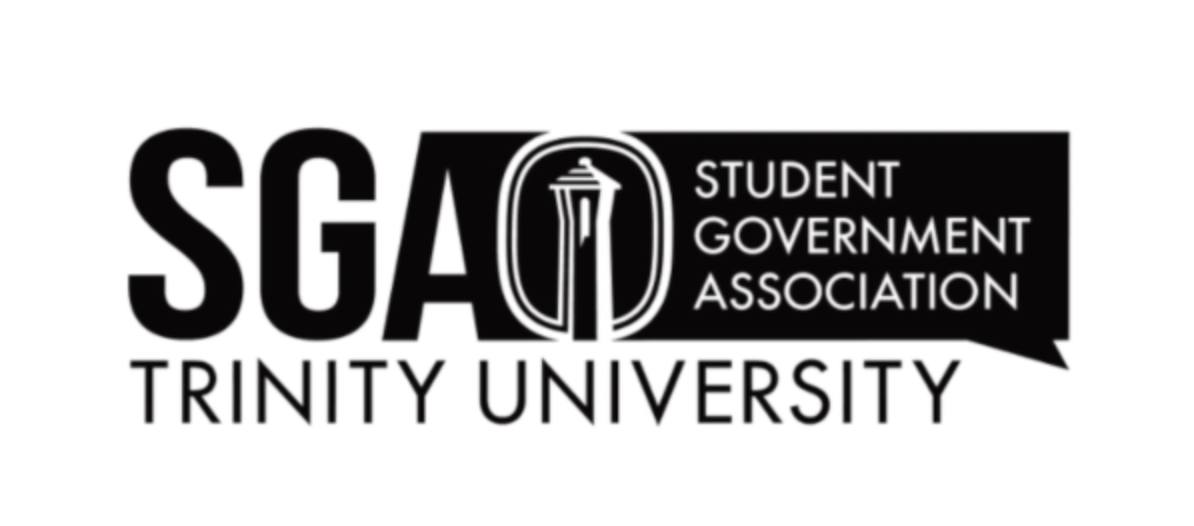The following covers the meeting on March 27.
GUEST COMMENTS
President Ty Tinker, junior, opened the floor to guest comments, specifically about the Coalition for Sexual Justice’s recent demonstration on the Esplanade called The Clothesline Project. The project displayed rows of colored shirts with words from survivors of sexual assault or harassment and supporters of survivors among others.
Student Malisee Lummus, junior, raised concern about the lack of appropriate trigger warnings prior to the event. The trigger warnings sent to the community were an email sent by Sheryl Tynes, vice president of Student Life; an email sent by Ty Tinker, junior and president of SGA and a post was made within the Overheard at Trinity Facebook group by one of the project’s organizers.
Hannah Braley — senior and member of the Coalition’s leadership team — responded to Lummus, saying they are welcoming criticism of the event to improve it in the future. Braley added that the Coalition had reached out to the Rape Crisis Center, the Diversity and Inclusion Office and the university chaplain to ask them to attend the project at some point in the week to help students process their traumas if they are survivors or are in some way connected to a survivor.
Gemma Smith, sophomore and member of the Coalition’s leadership team, said that the Coalition reached out to different student organizations and asked them to promote the event within their membership.
Both Braley and Smith agreed that the Coalition aims to take this experience and better the project in future years. Lummus suggested that the group build up to the event more slowly to give survivors a better chance to expect and prepare for the possible triggers.
Another student, junior Benjamin Brody, also attended the meeting and echoed Lummus’s concerns. Brody attended as a survivor and on the behalf of survivors he knows who did not feel comfortable attending. Brody also added that the location of the project, on the Esplanade beside Counseling Services, was perhaps not the best choice of placement.
Adviser David Tuttle, dean of students, said he was proud of the work the Coalition has done since its rebranding. Though one can highlight all of the places for improvement, Tuttle said, the Coalition achieved a bold, visceral statement and the level of visibility that it needs to gain support from the student body.
ADMISSIONS SCANDAL RECAP
Eric Maloof, vice president for Enrollment Management, spoke to SGA on behalf of the Office of Admissions to clarify the admissions scandal that involved a Trinity alumnus and to answer any lingering questions SGA members might have had.
BUDGET REQUEST HOW-TO
Adviser Jamie Thompson, who was absent from the meeting, presented about the protocol for budget request funding that will take place in April. Thompson voiced over a PowerPoint presentation to explain better SGA’s role during the funding process. The presentation included explanations of SGA’s responsibilities and the differences between USOs and groups like Campus Publications and Recreational Sports. The presentation was cut short due to time and will be finished at the next meeting.
OFFICER REPORTS
President Tinker reminded senators that attendance is necessary to be as efficient as possible and to be able to fulfill their responsibility to the student body. Tinker said he will begin to reinforce better the parts of the constitution and by-laws that identify consequences for truancy and absences.
Senator Nick Pereda, sophomore and chair of the public relations committee within SGA, presented a poll he created for the student body that will provide better information about how the community perceives SGA.








- • Apr 2, 2019 at 9:10 am
I disagree with Brody’s statement that the Clothesline Project should have been moved. I am also a survivor and I think that the Clothesline Project was meant to stir up the conversation of and bring awareness to assault. The leaders behind the Project strategically based themselves in the basement of Student Involvement so that victims could write their shirts in privacy. The actual presentation of the Project was in the best place possible because the entire student body was able to see the large rates of sexual assault on campus. I’ve heard several conversations (even controversial ones) since the Project and I think that was one of the purposes of the event.